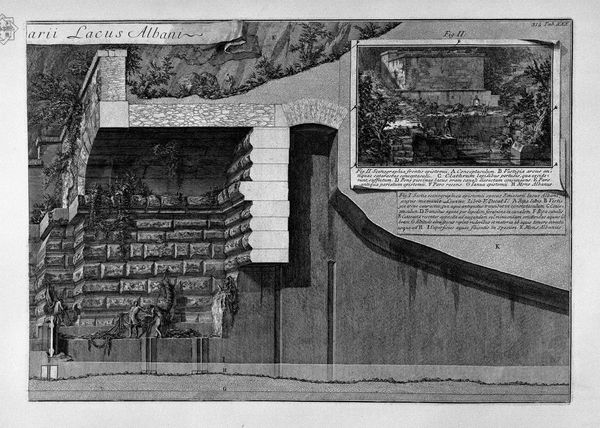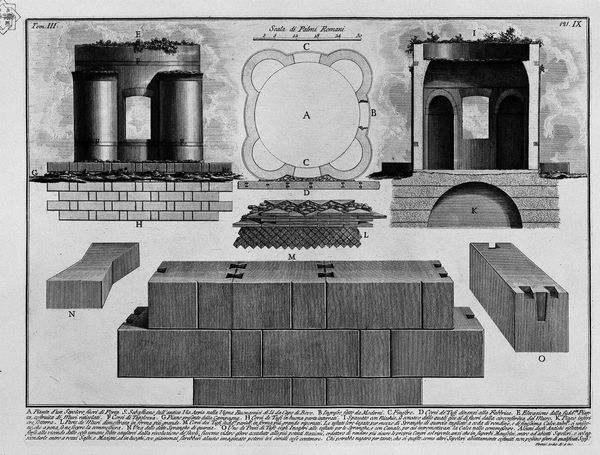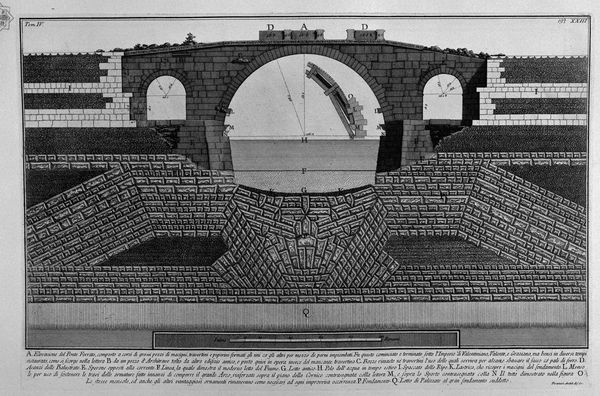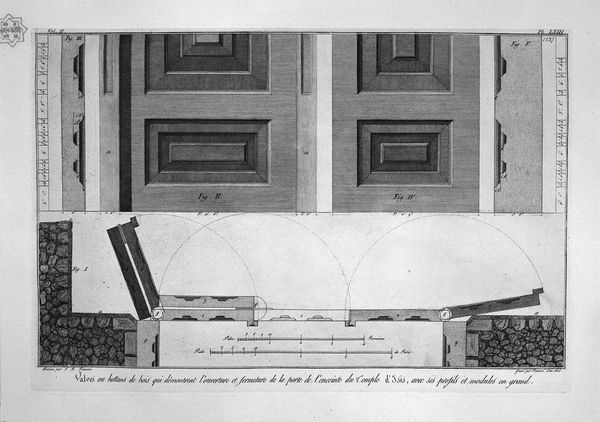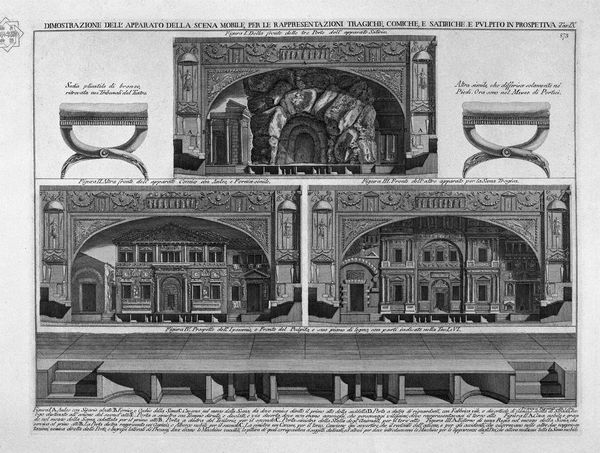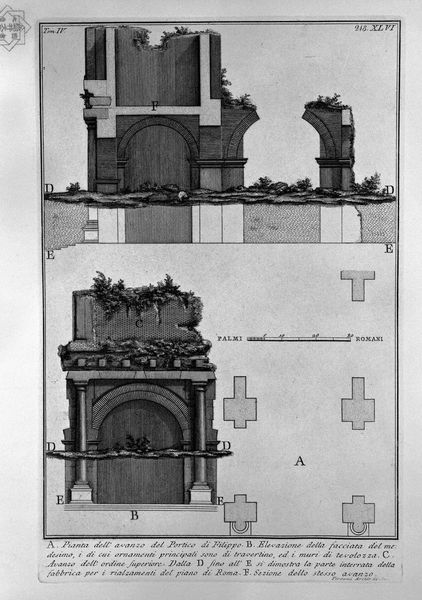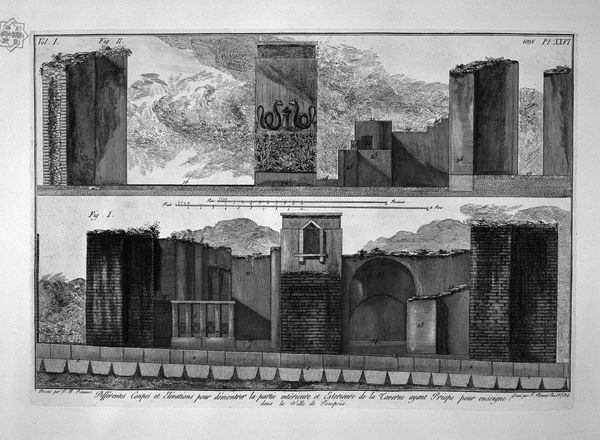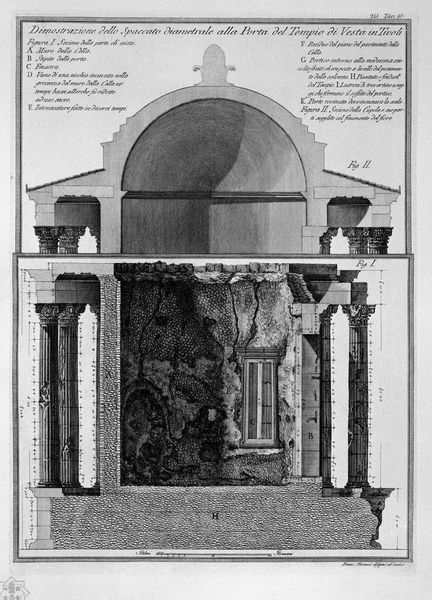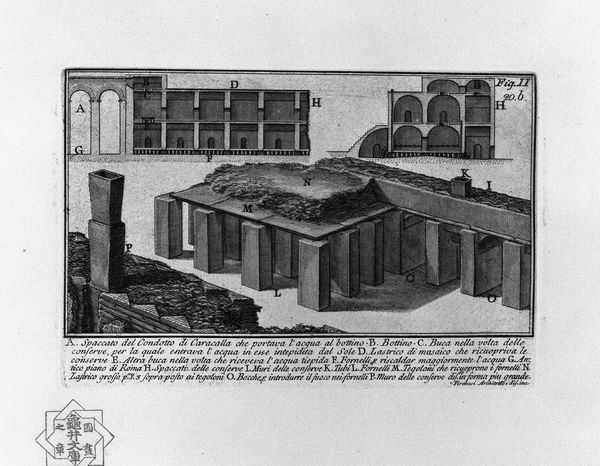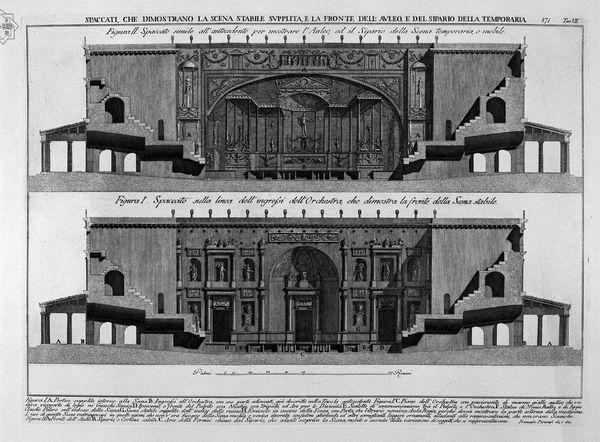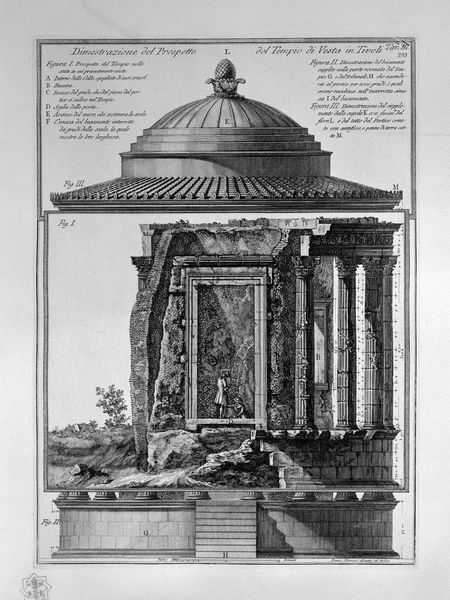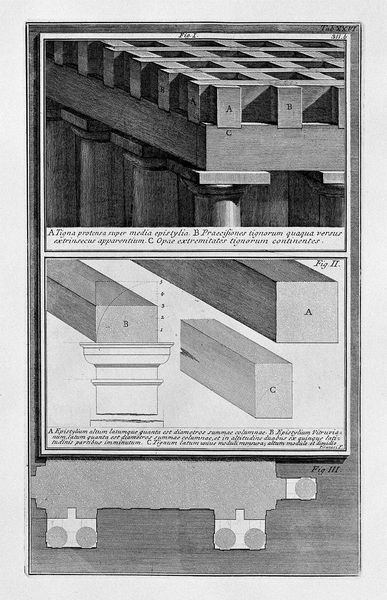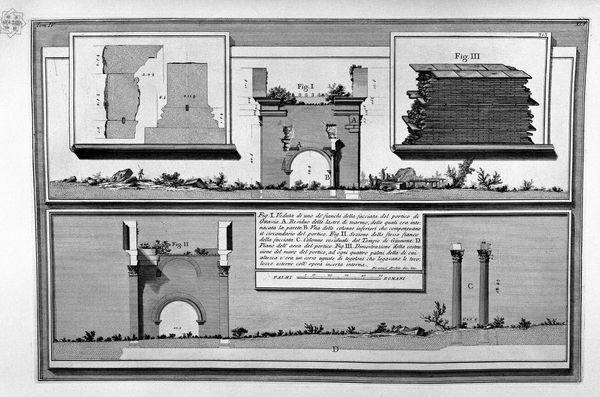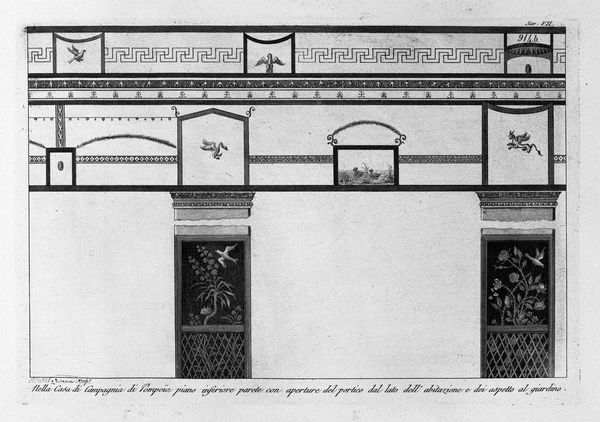
The Roman antiquities, t. 4, Plate XVIII. Inscriptions in Bridge of Four Heads.
0:00
0:00
drawing, print, etching, engraving, architecture
#
drawing
# print
#
etching
#
landscape
#
historic architecture
#
romanesque
#
cityscape
#
engraving
#
architecture
Copyright: Public domain
Curator: This etching by Giovanni Battista Piranesi is titled "The Roman antiquities, t. 4, Plate XVIII. Inscriptions in Bridge of Four Heads." It showcases a meticulously rendered Roman bridge. Editor: My initial reaction is one of stark formality. The meticulous lines, almost architectural in their precision, create a sense of detachment, despite the depiction of such a historically charged structure. Curator: Indeed. Piranesi, though working as an artist, greatly impacted how Europe came to view the archeological past. This bridge, captured through etching and engraving, highlights that very intersection of art and the study of antiquities during that period. Editor: I see how the inscription details serve to historicize the architecture, giving importance to this ancient bridge and its meaning to modern society. How did Piranesi leverage his role in shaping those public perceptions? Curator: Piranesi's approach often blended documentation with a certain romanticism. He wasn’t merely recording what he saw, but constructing an idea of Roman grandeur for his 18th-century audience. He understood the power of scale, often exaggerating the monumentality of these structures in ways that underscored Rome's lasting impact. Editor: The way that exaggeration influences present understanding is fascinating. Take for instance the three figures in the mid-ground, and how small the artist chose to present them—are we seeing some commentary on the people that move within, and among, historical and state structures? Curator: It is interesting how Piranesi positions them within the image. But in truth, these architectural prints served a very real political function as well. Through their production and distribution, the powerful images played a significant role in cultivating national identity and cultural values. Editor: Exactly! And there is still value in questioning those inherited values—this piece prompts questions around the ethics of image-making, and about how art informs perceptions of history and nationhood today. Curator: It’s a crucial point. Piranesi's work reminds us that our understanding of history is always mediated, always constructed through particular lenses. Editor: So, as striking as it is, this print urges us to consider not just what we're seeing, but why, and whose narrative is truly being preserved.
Comments
No comments
Be the first to comment and join the conversation on the ultimate creative platform.
